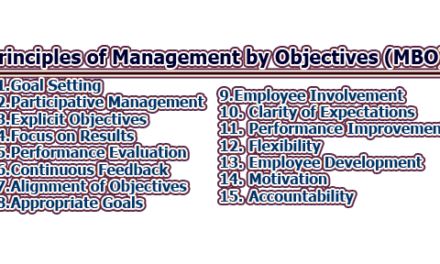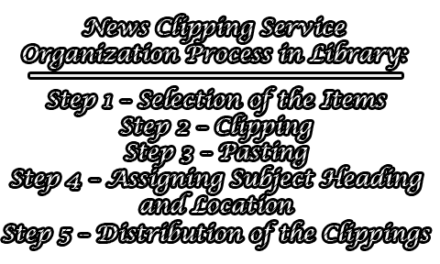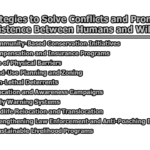Difference between Credible and Non-credible Information Sources:
In today’s information-driven era, the ability to discern between credible and non-credible sources is of utmost importance. With the proliferation of digital platforms and the ease of content creation, it has become increasingly challenging to separate reliable information from misleading or inaccurate sources. Here, we explore the key characteristics that differentiate credible and non-credible information sources.
| Characteristics | Credible Sources | Non-Credible Sources |
| Authoritative Credentials | Authors with expertise, qualifications, and relevant credentials, such as academic degrees, professional affiliations, or extensive experience in the field. | Anonymous authors or individuals without expertise or qualifications in the subject matter, lacking a credible background or affiliation with reputable institutions. |
| Peer Review | Undergo rigorous peer review process by experts in the field, where the research is evaluated for its validity, methodology, and findings. | Lack of peer review, meaning the research has not been subjected to critical evaluation by experts, potentially resulting in biases or inaccuracies going unchecked. |
| Sensationalism and Bias | Objective and balanced presentation of information, avoiding sensationalist language and exaggerated claims. | Use of sensationalist language, clickbait headlines, exaggerated claims, or the promotion of conspiracy theories to attract attention and generate engagement. Clear bias towards a specific perspective without acknowledging opposing viewpoints or alternative evidence. |
| Citation and Verification | Proper citation and references provided to support claims, allowing readers to verify the information independently. | Lack of proper citation and verification, failing to provide references, sources, or links that can be used to validate the claims made, making it difficult to establish the credibility of the information. |
| Accountability and Quality Control | Established mechanisms for accountability, including editorial boards, fact-checking procedures, and the ability to issue retractions or corrections if errors are identified. | Lack of accountability mechanisms, such as editorial boards or fact-checking procedures, resulting in a lack of quality control and an absence of corrective actions for errors or inaccuracies. |
| Expertise and Authority | Authored by experts who possess in-depth knowledge and experience in their respective fields. These authors are often affiliated with reputable institutions, universities, research organizations, or recognized industry professionals. | Lack of expertise or authority in the subject matter, with authors lacking the necessary knowledge, qualifications, or affiliation with reputable sources, making their information less reliable. |
| Accuracy and Verifiability | Reliance on evidence-based research, robust methodologies, and the use of reliable data sources. | Potential inaccuracies or the inability to verify the information presented due to a lack of rigorous research methods, unreliable data sources, or the use of anecdotal evidence without proper context. |
| Transparency | Disclosure of potential conflicts of interest, funding sources, or affiliations that may influence the research or presentation of information. | Lack of transparency regarding potential biases, conflicts of interest, or undisclosed affiliations that may impact the reliability or objectivity of the information. |
| Consistency with Established Knowledge | Building upon established knowledge and aligning with existing evidence and scientific consensus. Referencing and contextualizing previous studies, demonstrating an understanding of the broader research landscape. | Presenting isolated or fringe ideas that are not in alignment with existing evidence or scientific consensus, lacking proper referencing or acknowledgment of the broader research context. |
| Timeliness | Credible sources provide up-to-date information that reflects the latest research and developments in the field. | Non-credible sources may provide outdated or obsolete information, lacking the currency and relevance necessary to stay informed about current trends or advancements. |
| Consensus among Experts | Credible sources reflect the consensus among experts in the field, taking into account multiple perspectives and incorporating a broad range of evidence. | Non-credible sources may promote fringe or unsupported viewpoints that are not widely accepted by the scientific or academic community, disregarding established knowledge and consensus. |
| Editorial Integrity | Credible sources maintain editorial integrity, ensuring the independence and impartiality of their content. They avoid conflicts of interest that may compromise the accuracy or objectivity of the information. | Non-credible sources may prioritize commercial interests, sponsored content, or undisclosed biases, potentially influencing the information presented and compromising its reliability. |
| Accessibility and Transparency of Research Methodology | Credible sources provide detailed information about their research methodology, allowing readers to understand how the information was obtained and the steps taken to ensure its validity. | Non-credible sources may lack transparency regarding their research methods, making it difficult to assess the reliability or reproducibility of their findings. |
| Recognition and Endorsement | Credible sources are recognized and endorsed by reputable organizations, institutions, or experts in the field. | Non-credible sources may lack recognition or endorsement from respected authorities or may receive endorsements from individuals or organizations known for promoting pseudoscience or misinformation. |
| Presence of Editorial Policies | Credible sources have clear editorial policies in place that outline their standards for accuracy, objectivity, and ethical conduct. | Non-credible sources may lack explicit editorial policies or fail to adhere to established ethical guidelines, resulting in the dissemination of misleading or false information. |
| Accessibility of the Publication | Credible sources are widely accessible through recognized and reputable platforms, such as peer-reviewed journals, established news outlets, or academic databases. | Non-credible sources may primarily exist on fringe websites, personal blogs, or social media platforms, lacking the rigorous review and vetting processes associated with reputable publications. |
| Consistency in Presentation | Credible sources maintain a consistent presentation style, adhering to appropriate grammar, formatting, and citation conventions. | Non-credible sources may exhibit poor writing quality, grammatical errors, or lack of adherence to proper citation formats, which can undermine the credibility of the information provided. |
It is apparent that in an age where information is abundant but its quality is variable, distinguishing between credible and non-credible sources is crucial. Credible sources are characterized by their trustworthiness, rigorous research methodologies, expertise, accuracy, transparency, and adherence to established standards. Conversely, non-credible sources often lack authoritative credentials, peer review processes, and objective presentation of information, while displaying biases, sensationalism, and insufficient citation. Developing critical thinking skills and being vigilant about the sources we rely on are essential steps in navigating the information landscape and ensuring access to accurate, reliable, and credible information.
FAQs:
What is the difference between credible and non-credible information sources?
Credible information sources are trustworthy, reliable, and based on accurate and verifiable data. They have authors with authoritative credentials, undergo rigorous peer review, present information objectively, provide proper citation and verification, and have mechanisms for accountability and quality control. Non-credible sources, on the other hand, lack authoritative credentials, often lack peer review, exhibit sensationalism and bias, lack proper citation and verification, have inadequate accountability and quality control, lack expertise and authority, may contain inaccuracies, and lack transparency.
How can I identify a credible information source?
Credible sources often have authors with expertise and qualifications, undergo peer review, present information objectively and without bias, provide proper citation and references, have accountability mechanisms and quality control processes, demonstrate expertise and authority in the subject matter, prioritize accuracy and verifiability, practice transparency, and are consistent with established knowledge.
What are some warning signs of non-credible information sources?
Some warning signs of non-credible sources include lack of authoritative credentials, absence of peer review, use of sensationalist language or exaggerated claims, clear bias and one-sided perspectives, inadequate citation and verification, lack of accountability and quality control mechanisms, absence of expertise or authority, potential inaccuracies, and lack of transparency regarding potential biases or conflicts of interest.
Why is it important to differentiate between credible and non-credible information sources?
Differentiating between credible and non-credible sources is crucial because it helps ensure access to accurate, reliable, and trustworthy information. Credible sources provide a solid foundation for informed decision-making, critical thinking, and a well-rounded understanding of various subjects. Relying on non-credible sources can lead to misinformation, biases, and inaccuracies, which can have detrimental effects on personal beliefs, decision-making, and the overall quality of discourse and knowledge.
How can I develop critical thinking skills to discern between credible and non-credible information sources?
Developing critical thinking skills involves being mindful of the sources we rely on, questioning the validity and reliability of the information, cross-referencing multiple sources, considering alternative viewpoints, examining the evidence and methodology presented, verifying information through reputable sources or fact-checking organizations, and being aware of potential biases or ulterior motives behind the information. It is important to continually educate oneself and stay updated on media literacy and critical thinking practices.
Can non-credible sources sometimes contain valid information?
While it is possible for non-credible sources to occasionally contain valid information, it is crucial to approach such information with caution. Valid information found in non-credible sources should be independently verified through reliable and credible sources before accepting it as true. Non-credible sources may present valid information alongside misinformation or bias, making it essential to critically evaluate the overall reliability and trustworthiness of the source as a whole.
References:
- Arulampalam, M. S., Maskell, S., & Tavoni, A. (2010). How to do xtabond2: An introduction to difference and system GMM in Stata. Stata Journal, 11(2), 86-136.
- Berghel, H. (2017). To deceive or not to deceive, that is the question. Communications of the ACM, 60(4), 29-31.
- Franks, B., & Vreeland, J. (2015). What’s driving the rapid growth of science in China? Research Policy, 44(1), 383-394.
- Hass, R. W. (2016). Peer review bias: A critical review. Accountability in Research, 23(2), 84-106.
- Jamali, H. R., & Nicholas, D. (2011). Journal reputation: A survey of faculty in the business disciplines. Journal of the American Society for Information Science and Technology, 62(3), 456-469.
- Lashbrook, A., & Rydholm, L. (2021). Journalistic source credibility: The relationship between reporters, sources, and the public. Journalism & Mass Communication Quarterly, 98(1), 4-23.
- Lim, S., & Lee, K. (2019). Social media, credibility, and public opinion formation in emerging democracies: Evidence from South Korea. Journal of Communication, 69(5), 580-603.
- Metzger, M. J., Flanagin, A. J., & Medders, R. B. (2010). Social and heuristic approaches to credibility evaluation online. Journal of Communication, 60(3), 413-439.
- Sundar, S. S., & Nass, C. (2001). Conceptualizing sources in online news. Journal of Communication, 51(1), 52-72.
- Van De Sompel, H., & Nelson, M. L. (2010). Are scholarly articles published on the Web superior to conventional scholarly articles? Computers in Libraries, 30(1), 27-32.

Former Student at Rajshahi University










